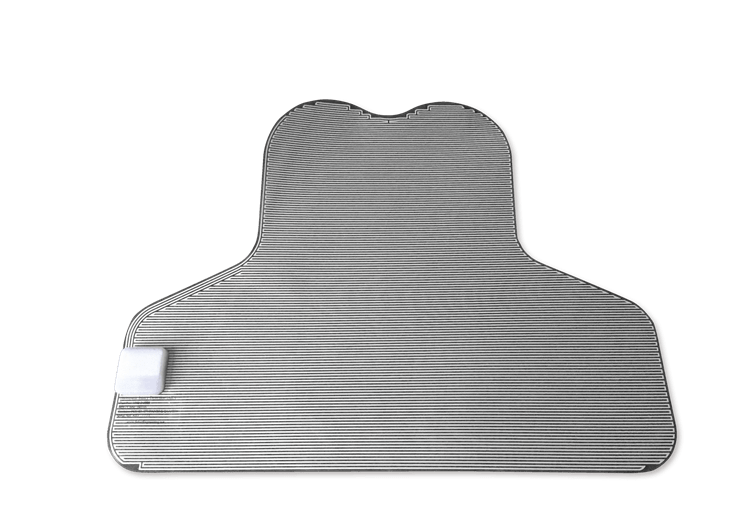DataSoft’s ‘Automatic Injury Detection’ sensor employs Nordic’s nRF52832 SoC to transmit low power alerts in combat or emergency situations
Nordic Semiconductor today announces that DataSoft Corporation, a Tempe, AZ-based low power wireless solutions company, has employed Nordic’s Bluetooth® Low Energy (Bluetooth LE) nRF52832 System-on-Chip (SoC) in its ‘Automatic Injury Detection’ (AID) solution, a wireless sensor integrated into ‘man-down’ vests for law enforcement and military applications.
According to DataSoft, AID is the world’s first wearable gunshot detection system. The AID panel features a thin film sensor with an encased conductive ink trace inside the body armor that detects any piercing event to the wearer’s front or back, such as the impact of a bullet, knife, or shrapnel.
In the event the wearer suffers an impact, the vest automatically connects to a paired device—typically the user’s Bluetooth 4.0 (and later) smartphone or radio—using Bluetooth LE wireless connectivity provided by the Nordic SoC, up to a range of almost 70 meters. The long-range connectivity is due in part to the nRF52832 SoC’s high link budget 2.4GHz radio that offers a maximum transmit (TX) output of +4dBm and a maximum receive (RX) sensitivity of -96dBm. The smartphone then sends an emergency alert to nominated first responders and/or agency backup units via SMS, or directly to an Internet location such as the dispatcher’s console.
Emergency notifications include the user’s name and accurate personal medical information, the linked device’s GPS location, and where on the vest the impact occurred, allowing medical responders to assess the urgency and seriousness of the potential injury. AID can also automatically and instantly initiate one call to a selected phone number via DataSoft’s companion app on the user’s smartphone, as well as activate a wireless body camera to record the incident.
Because our AID sensors are installed inside the vest making it difficult for them to be removed and charged, the Nordic SoC’s minimal power draw was also of critical importance
John Bohlke, DataSoft
The sensor employs a 300mAh Li-Poly battery, allowing the device to operate for up to two years on a single charge, thanks in part to the ultra low power consumption of the Nordic SoC. The nRF52832 has been engineered to minimize power consumption with features such as the 2.4GHz radio’s 5.5mA peak RX/TX currents and a fully-automatic power management system. The AID sensor can be recharged via an integrated micro-USB port.
Nordic’s nRF52832 multiprotocol SoC, a member of Nordic’s sixth generation of ULP wireless connectivity solutions, combines an 64MHz, 32-bit Arm® Cortex® M4F processor with a 2.4GHz multiprotocol radio (supporting Bluetooth 5, ANT™, and proprietary 2.4GHz RF software) featuring 512kB Flash memory and 64kB RAM. The SoC is supplied with Nordic’s S132 SoftDevice, a Bluetooth 5-certifed RF software protocol stack for building advanced Bluetooth LE applications. The S132 SoftDevice features Central, Peripheral, Broadcaster and Observer Bluetooth LE roles, supports up to twenty connections, and enables concurrent role operation.
“The ability of the Nordic chip to support both Central and Peripheral Bluetooth LE roles was important,” says John Bohlke, Director of Business Development at DataSoft Corporation, “because in some cases, we connect the back AID sensor to the front AID sensor, and the front AID sensor to a radio. We need that flexibility to overcome the limitations of a radio that only supports one connection.
“And because our AID sensors are installed inside the vest making it difficult for them to be removed and charged, the Nordic SoC’s minimal power draw was also of critical importance.”

